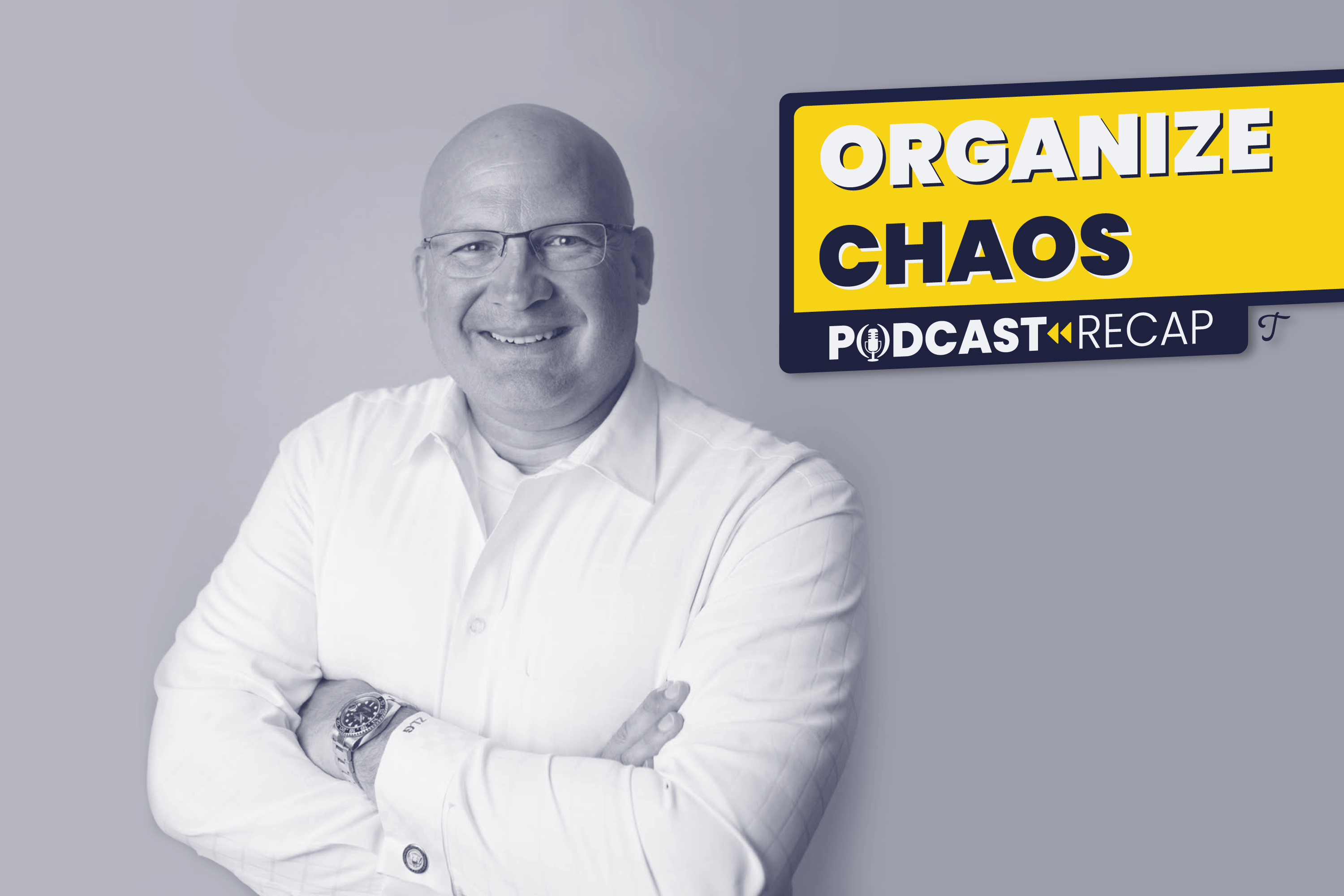Looking for part-time help? Offer workers these 6 perks.
June 15, 2022
It’s a bear market out there. Catch us hibernating with our stockpile of sriracha and Liquid Death.
In this week’s edition:
- Finding hidden costs that could sink your business.
- Using your unfair business advantage to best the competition.
- Learning how to see into the future.
- Attracting part-time employees with the right perks.
SNEAKY, SNEAKY
Small business costs that’ll creep up on you
Not me! I’m a careful budgeter.
You might have it all figured out — a detailed spreadsheet including each and every predicted business spend or an emergency fund set aside just in case you-know-what hits the fan.
But there’s one set of costs that sneaks right up on you: small expenses. Unlike your “oh crap” expenses that sound the alarm and force you to dip into your emergency fund, small expenses slowly add up over time. And all of a sudden, your profit margin is not at all what you expected it to be.

So it’s time to do your research and build even the smallest and sneakiest costs in your financial forecast. Here are seven costs to watch out for and work into your profitability model.
Sneaky cost #1: Shipping.
It’s easy to underestimate how much your business spends on shipping. Packing material, carrier fees, and insurance add up over time — especially if you offer free or international shipping.
Keep an eye on your shipping budget and choose your shipping method wisely. A best practice is to work with multiple carriers to find the most economical choice for each package size and weight you use.
The same idea applies if you have to order a lot of raw materials or supplies to run your business! Costs for shipping can still add up, so consider ordering in bulk to avoid unnecessary costs.
Sneaky cost #2: Employee expenses.
You’ve factored in payroll and benefits for your full-timers. But don’t forget the small expenses — think office supplies, break room coffee and snacks, travel reimbursements, and rewards to motivate your team.
A few dollars for coffee today could be several hundred by the end of the month, and maybe even thousands by the end of the year (gulp). Don’t be surprised by these numbers — map them out ahead of time instead! Figure out what you’d like to offer your employees throughout the year and work it into your budget.
Sneaky cost #3: Taxes.
To keep your tax liability from creeping up on you, track it throughout the year. Waiting until April to figure out how much you owe is a little too late. The amount could be sky-high by then, so you need to estimate what you’ll owe by tax season and set it aside beforehand.
👉 All seven costs to watch out for.
I WANT IT ALL
Can your SMB succeed? Ask yourself these 3 Q’s.

“Will this be a successful business?”
Every entrepreneur (and their mother) asks themselves that question — they want to know if their current business model will be both sustainable and profitable in the long run.
And while there’s no telling what the future will hold, Founder of LumAware and Foxfire Zachary Green jumped on the Organize Chaos podcast to share how every business leader can figure out their chances of success with three simple questions:
1. Have you solved a problem in a unique and elegant way?
Zachary, a veteran and former fire lieutenant, got lost in a fire very early in his career. He wanted to make sure other firefighters avoided the same scenario, so he began working with a product developer to engineer fire-fighting equipment that glows in the dark.
It didn’t take long for buyers to see how the new application solved a problem. And if you can use your business to show people they have a problem they didn’t even realize, they’ll naturally come to your product or service as their number one solution.
2. Do you have an unfair competitive business advantage?
Every business leader has a one-up on their competition — your job is to figure out what it is and capitalize on it.
For Zachary, it was his reputation as an experienced firefighter coupled with his entrepreneurial personality. When he reached out to his customer base of fellow firefighters, he was already considered a trustworthy advisor — making it that much easier to grow his businesses.
👉 Find out the third question.
FUTURAMA
How to see the future (and get ready for it)
.gif)
Wait, lemme grab my crystal ball. lulz.
We know, we know. Sounds a bit… “woo woo.” But hear us out. Jane McGonigal, the director of game research and development at the Institute for the Future, designs games that help people improve their lives and solve problems. In fact, over 1M individuals have tackled health issues — like chronic pain and depression — thanks to her work with organizations like the American Heart Association, the International Olympics Committee, and the World Bank Institute.
That’s amazing, but what does that have to do with the future?
McGonigal has to think big on the job and uses her finely-honed skills to map out all sorts of potential outcomes and scenarios for her games. Through her work, she’s found five key ways to imagine how the future might play out and prepare for it. And during these interesting times (hello inflation, pandemic, war, supply chain issues, dijon mustard ice cream), honing this ability can really set your business up to weather a whole host of storms.
Okay, what are the five key ways to see the future?
Thought you’d never ask. Let’s start with…
- Taking a ten-year trip to the future. Why ten years? Because that’s just enough time for society (and your life) to become wildly different. Using a ten-year timeline gives you enough spatial buffer to “open your mind, take in new information, reduce your blind spots, increase your empathy, set more optimistic goals, and see a much bigger picture.” So whenever you feel stuck or in a rut, think about how the world might be different ten years from now.
- Being ridiculous. At first. Prepare your imagination for “unimaginable” possibilities. If someone had told you in 2019 to picture a world where virtually all nations shut down and nearly a billion children stopped going to school, you would have told them they were, indeed, ridiculous. “Any future scenario that you instinctively dismiss reveals a potential blind spot in your imagination. If something feels unimaginable, that’s the tip-off that it is an essential future to start thinking about.”
HIRING NOW
6 perks to attract part-time employees
Looking to beef up your team?
Maybe your business has a backlog of projects. Or maybe you’re jumping head first into summer, your busiest season of the year. Regardless of your reasons, you’re reading this because you need some extra hands. And with the labor shortage, you may be feeling some anxiety about attracting employees to your business.
.gif)
But hope isn’t lost! Here are six perks that will help you entice part-time employees:
Flexible schedules
People want more control over when they do their work. In fact, workers care more about flexible hours than remote work. And while offering flexible hours isn’t possible for all industries, it’s worth determining whether your business can still thrive if your employees do their work outside of normal business hours.
Professional development
Employees are looking for opportunities to develop their skills and grow into their potential. According to a survey of over 2K employees, 92% considered access to professional development as important or very important. And in the University of Phoenix’s Annual Career Optimism Index 2022, 68% of workers stated they would stay with their employers throughout their careers if their employer made the effort to upskill them.
Consider introducing bonuses for tuition reimbursement or training certifications. Give the people what they want.
Employee recognition programs
We were all taught to say “thank you” when other people did something for us. But when it comes to our employees, our gratitude should be a little more… substantial. Set up public praise through people management platforms like Lattice or start an employee recognition program with companies like Bonusly.
👉 Check out the rest of the perks.
TL;DR
This week’s highlight reel
- Ducking autocorrect. Apple just revealed all the iOS 16 updates being released this fall. Among the most exciting: the ability to edit iMessages, unsend them, and even mark them as unread (it’s about time). *Android users laugh in perceived superiority.*
- It’s getting hot in here. Or is it cold? Enter the biggest office debate of all time: the right temperature. But a recent study has finally solved it once and for all! Your team will have the highest productivity when the office is between 71.6°F and 75.2°F. But even then, some will be sweating profusely and others will be bundling up in puffy coats. Can’t please everyone.
- Dolla dolla bills, y’all. Progressive Insurance is giving ten Hispanic entrepreneurs $25K in small businesses grants. But hurry — the application deadline is June 17. If you miss it, here’s your backup: Tito’s Handmade Vodka is also offering $25K to ten small business owners to support their visions for growth. Just apply by June 30.
- Weak sauce. A chili pepper harvest shortage leads us to this unfortunate news: Sriracha could be off the shelf for months. Some are spiraling and others are planning to snatch every existing bottle off the shelf. But please don’t panic-buy — we learned our lesson from the toilet paper crisis of 2020… right?




